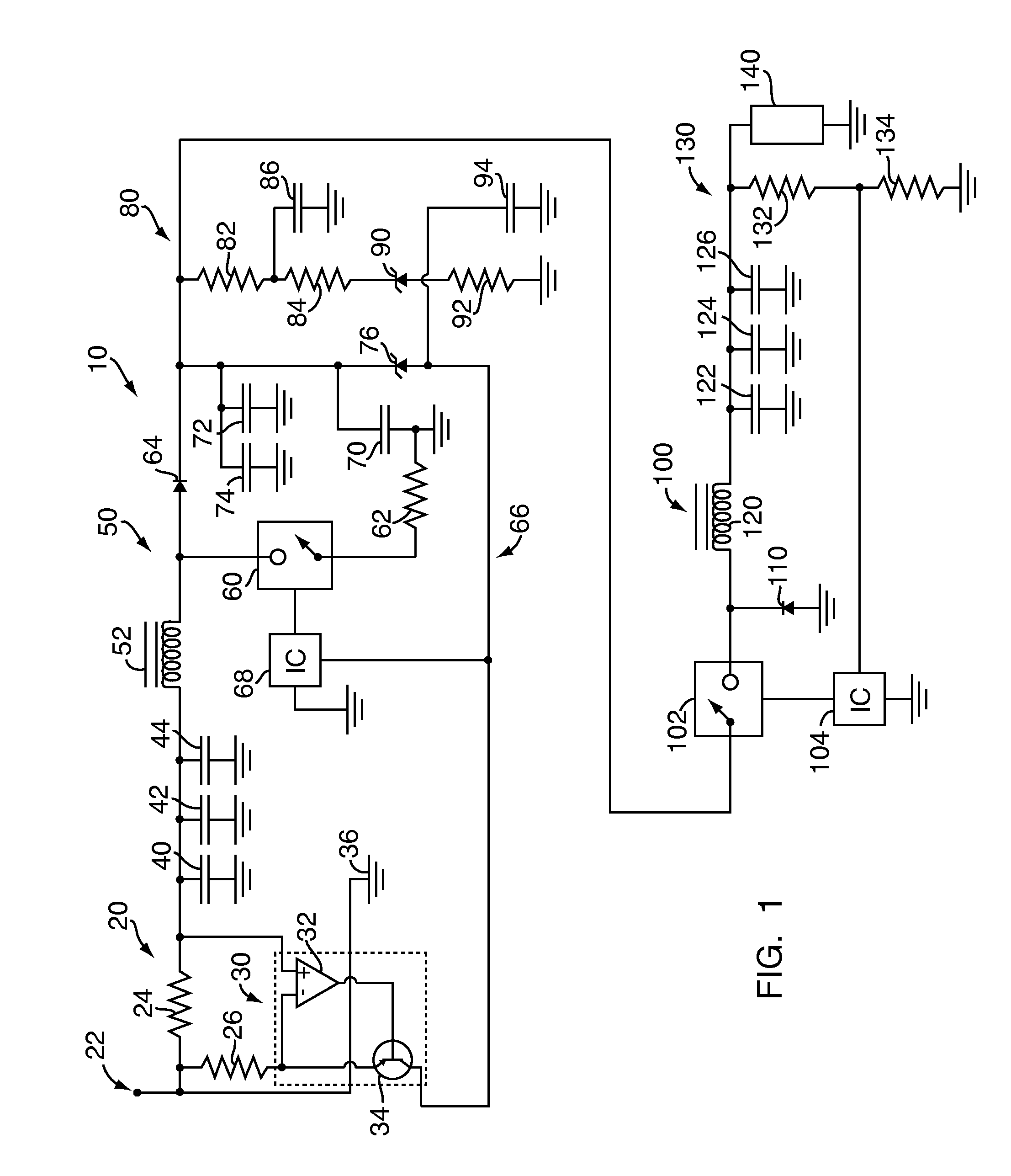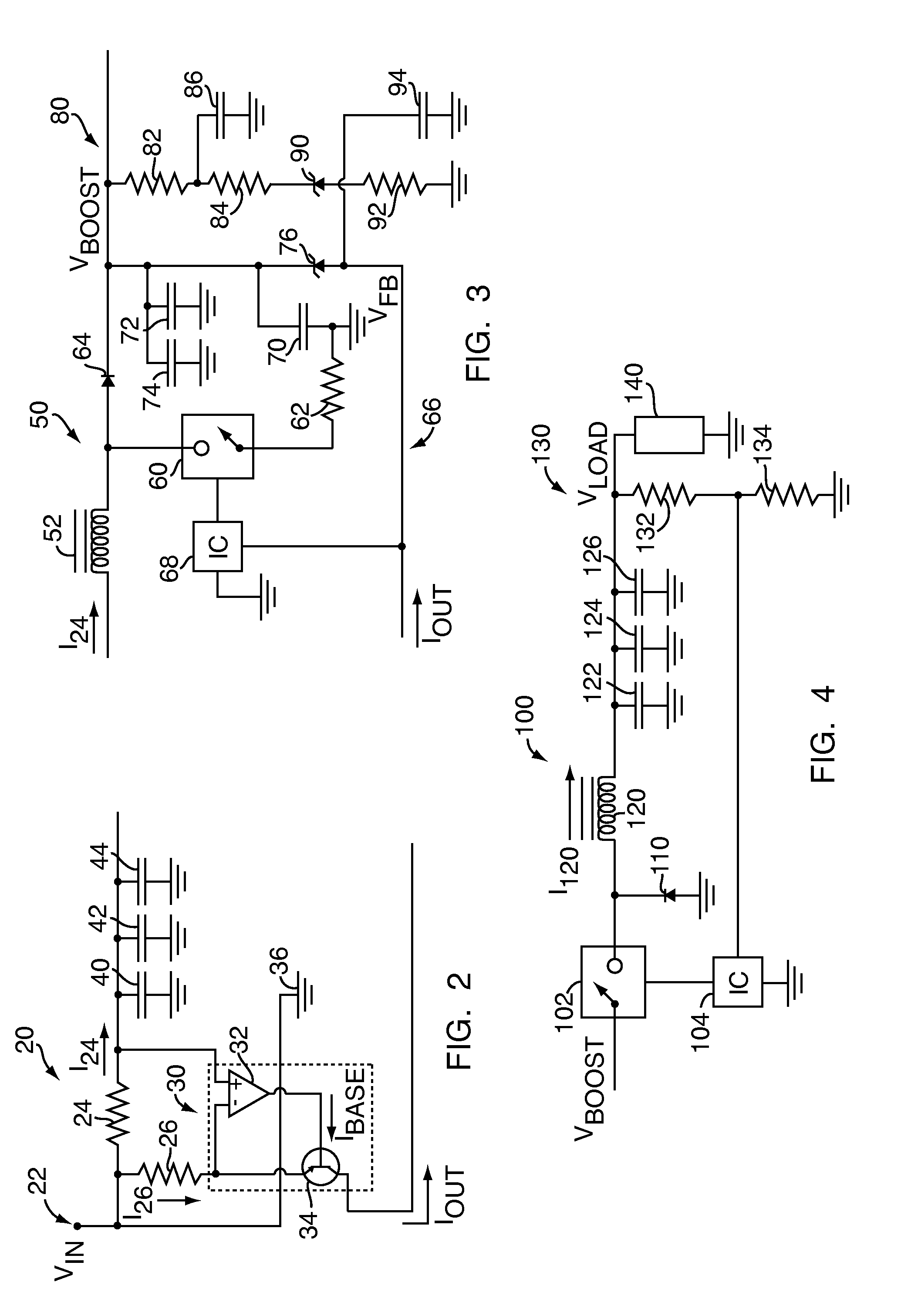Active voice band noise filter
a technology of active voice and filter, applied in the field of system and method of filtering noise, can solve the problems of unwanted conducted voltage and current that travels through input or output lines, direct current (dc) motors and engines may generate conducted noise in any number of ways, and generate interference particularly in low frequency ranges, so as to reduce the conductivity of dc circuits, precise control of output voltage, and the effect of less power
- Summary
- Abstract
- Description
- Claims
- Application Information
AI Technical Summary
Benefits of technology
Problems solved by technology
Method used
Image
Examples
Embodiment Construction
[0017]Referring to FIG. 1, an active filter 10 according to one embodiment of the present invention is shown. The active filter 10 shown in FIG. 1 also includes a current sensor 20, a boost converter 50 and a buck converter 100 connected in series with a load 140. The active filter 10 also includes a pair of energy storage capacitors 70, 72, a diode 76, and a low-pass filter circuit 80.
[0018]The current sensor 20 may be any conventional device or component for sensing DC current that is known to those of skill in the art. In the embodiment of the present invention shown in FIG. 1, and as is shown in greater detail in FIG. 2, the current sensor 20 is a high-side current sensor that includes a sense resistor 24, a gain resistor 26 and a current amplifier 30. During operation, an input voltage VIN is applied to current sensor 20 from power source 22. Current sensor 20 monitors the voltage drop V24 across sense resistor 24, which has a resistance R24 that is relatively low compared to t...
PUM
 Login to View More
Login to View More Abstract
Description
Claims
Application Information
 Login to View More
Login to View More - R&D
- Intellectual Property
- Life Sciences
- Materials
- Tech Scout
- Unparalleled Data Quality
- Higher Quality Content
- 60% Fewer Hallucinations
Browse by: Latest US Patents, China's latest patents, Technical Efficacy Thesaurus, Application Domain, Technology Topic, Popular Technical Reports.
© 2025 PatSnap. All rights reserved.Legal|Privacy policy|Modern Slavery Act Transparency Statement|Sitemap|About US| Contact US: help@patsnap.com



